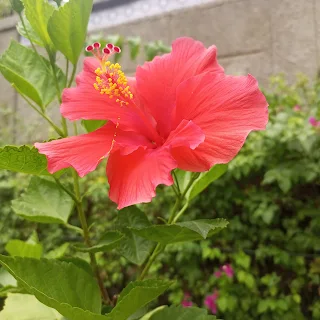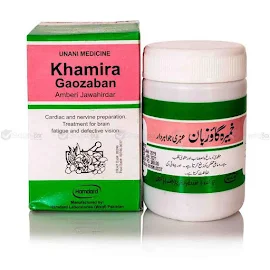Hey there, everyone. Today we are diving into different flowers that can be used as drugs. In this article, we have covered the scientific name, family name, local name, English name, parts used as medicine, constituents found, and pharmacological activity exerted by the flowers. Whether you believe it or not, these are used in medicines as per their pharmacologic actions. Furthermore, you will find their uses/indications, doses, and side effects as these drugs may be herbal but can be toxic if not taken within the limit. Products available of these herbs in the market are also discussed at the end of every drug.
FLOWER DRUG NO. 1

Scientific name: Viola odorata Linn.
Family name: Violaceae

Local name: Banafsha
English name: English violet, Florist's violet
Parts used: Flowers, roots, and leaves
Constituents: Phenolic glycosides, Saponins, volatile oil, coloring matter, gaultherin, violutoside, odoratin
Pharmacological actions: Expectorant, anti-inflammatory, antipyretic, anti-rheumatic, diaphoretic, diuretic, laxative, analgesic.
Uses/indications: It is mainly used as a herbal remedy for the treatment of various respiratory ailments including treatment of congestion, cold, coughs, pneumonia, bronchitis, fever, and sore throat. Different antitussive syrups containing viola herb As a main ingredient. Decaution acts as a mild laxative. It is used in epilepsy, hysterical or nervous complaints, incontinence urination, and nose numbness. Gaultherin is a natural salicylate derivative present in Viola Herb due to which it is used for the treatment of headaches migraine, and insomnia. In lotions, it is used for treating acne, eczema, and skin disorders. The sweet scent of this flower is used in the production of many cosmetic fragrances and perfumes
Dosage: 1-2 g/day (divided into 3 doses before meal)
Side effects: Raw or untreated plant can be slightly toxic so avoid it. excess use can cause skin adverse reactions. Internal use for young children may be harmful.
Product available:
Sharbat e banafshaUses:
- Useful for fever and headaches.
- A good cure for cold and cough.

FLOWER DRUG NO. 2

Scientific name: Punica granatum Linn.
Family name: Punicaceae
Local name: Gul-e-Anar
English name: Pomegranate
Parts used: Flower, fruits, seeds, bark
Constituents: Polyphenols (Gallic acid), alkaloids, glucose, fructose, oxalic acid
Pharmacological actions: Astringent, hemostatic, antidiabetic, antioxidant, Anti-inflammatory, anthelmintic, antidiarrheal, styptic, refrigerant, stomachic
Uses/indications: Pomegranate flower contains a high number of polyphenols due to which they have potent antioxidant and anti-inflammatory potential. Due to the presence of sufficient antioxidants in pomegranate flowers, the immune system stays healthy and fights against bacteria and viruses. In Unani, Ayurvedic Systems, and Chinese traditional systems of medicines pomegranate flowers have been used as an antidiabetic for treating diabetes for centuries. The pomegranate flower helps in reducing wrinkles and improve aging skin. It eliminates the depots of fat from the body and is found helpful in maintaining cardiovascular health by reducing the possibility of atherosclerosis through learning LDL levels and also used to treat diarrhea in AIDS patients
Dosage: Flower extract 50-150 mg/kg
Side effects: Sensitivity to pomegranate includes itching, runny nose, and, difficulty breathing. Pomegranate is possibly unsafe when the root and stems are taken by mouth. The root contains a poison.
Product available:
Gul e Anar powder
Uses:
- Good for acne.
- An effective moisturizer.
- Highly effective for oily skin.

FLOWER DRUG NO. 3

Scientific name: Hibiscus rosa-sinensis Linn.
Family name: Malvaceae
Local name: Gurhal
English name: China rose, shoe flower
Parts used: Flowers, root, flower buds
Constituents: Steroids, flavonoids(anthocyanin pigment), tannins, reducing sugar, mucilage, coloring
agents, carotene, thiamine, riboflavin, niacin, ascorbic acid
agents, carotene, thiamine, riboflavin, niacin, ascorbic acid
Pharmacological actions: Refrigerant, antidiabetic, antihypertensive, antioxidant, emollient, emmenagogue, Anti-inflammatory, anti-cholesterolemic
Uses/Indications: Hibiscus flowers are traditionally used for the treatment of diabetes. Hibiscus is rich in antioxidants such as anthocyanins, vitamin C and carotene therefore used for the treatment of cancer, asthma, heart diseases, and rheumatoid arthritis. Drinking hibiscus tea is also known for reducing blood pressure and lowering cholesterol. It is also used for promoting weight loss and reducing fever in pyrexia.
Dosage: As an antipyretic, patients drink three glasses per day of a decoction or infusion of one to two flowers per 250 ml water steeped for three to four minutes.
Side effects: Abortifacient effects have been observed. At high doses may be harmful to the liver. Contraindicated in pregnancy.
Product available:
Hibiscus flower tea
Uses:
- A good source of antioxidants.
- Helps in controlling the cholesterol.
- Eases constipation.

FLOWER DRUG NO. 4

Scientific name: Onosma bracteatum Wall.
Family name: Boraginaceae
Local name: Gul-e-gaozaban
English name: Sedge
Parts used: Flowers, roots, and leaves
Constituents: Glycosides, phenolic compounds, flavonoids, tannins, carbohydrates, protein
Pharmacological actions: Expectorant, nervine tonic, astringent, cardiac tonic, refrigerant, antidepressant, diuretic
Uses/indications: It's very effective in the treatment of bronchitis, fever, rheumatism, stomach irritation as well as other inflammatory disorders. It's used as a tonic in the treatment of rheumatism, syphilis, leprosy hypercondriacies and kidney stones. As an expectorant, it alleviates the symptoms of the common cold, throat irritation, and bronchitis. The plant is considered to be useful in relieving excessive thirst and restlessness in febrile excitement, and also to be useful in relieving functional palpitations of the heart it brings bile out by vomiting and loose motions.
Dosage: 1-2 g/day (divided into 3 doses before meal)
Side effects: Raw or untreated plant can be slightly toxic so avoid it. excess use can cause skin adverse reactions. Internal use for young children may be harmful.
Product available:
Khamira gaozaban (SADA)
Uses:
- Useful for melancholia, other depressive mental states, and palpitations.
- It also reduce the occurrence of hysteria.

Hopefully, you all enjoyed the article and gained some knowledge regarding the actions exerted by herbs and their daily life uses.

.jpeg)
.jpeg)
.jpeg)


0 Comments